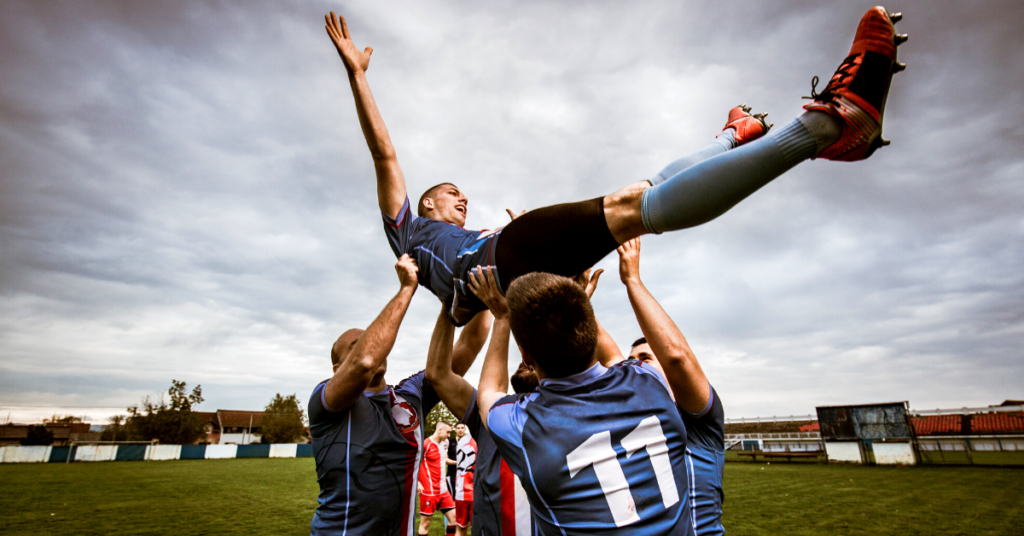Speed and agility are critical attributes for athletes across a wide range of sports, enabling them to outpace opponents, change direction quickly, and excel in their performance. Whether you’re a soccer player, basketball player, track athlete, or participate in any sport that requires quick movements, incorporating effective speed and agility training into your routine is key. In this article, we will explore various training strategies and techniques to help you enhance your speed, agility, and overall athletic performance.
Introduction
Speed and agility are key components of athletic performance, allowing athletes to excel in their respective sports. By incorporating specific training methods, drills, and techniques, athletes can enhance their speed, change direction quickly, and perform at their best.
Understanding Speed and Agility
The Importance of Speed and Agility in Sports
Speed and agility play a crucial role in sports such as soccer, basketball, football, tennis, and many others. They allow athletes to reach their top speed, change direction rapidly, and react swiftly to game situations. Developing these skills can give athletes a competitive edge.
Difference Between Speed and Agility
Speed refers to how fast an athlete can cover a distance in a straight line, while agility refers to an athlete’s ability to change direction quickly and efficiently. Both attributes are important and can be developed through specific training methods.
Building Speed: Training Methods
Sprint Training
Sprint training involves running at maximum or near-maximum speed for short distances. It helps improve stride length, stride frequency, and overall speed. Incorporate various sprint workouts, such as interval sprints, hill sprints, and resisted sprints, to challenge different energy systems and improve acceleration.
Interval Training
Interval training involves alternating between periods of high-intensity sprinting and active recovery. This method improves anaerobic capacity, increases lactate threshold, and enhances overall speed endurance.
Resistance Training
Incorporating resistance training exercises, such as squats, lunges, and plyometrics, can strengthen the muscles involved in sprinting and improve power output. Focus on explosive movements that mimic the demands of sprinting.
Enhancing Agility: Training Methods
Cone Drills
Cone drills involve weaving in and out of cones placed in specific patterns, simulating quick changes of direction. These drills improve agility, footwork, and lateral quickness. Examples include the T-Drill, 5-10-5 Drill, and W-Drill.
Ladder Drills
Ladder drills are performed using an agility ladder laid out on the ground. They focus on quick feet movements, coordination, and agility. Popular ladder drills include the icky shuffle, lateral shuffle, and high-knee drills.
Plyometric Exercises
Plyometric exercises involve explosive movements that enhance power and reactive ability. Exercises like box jumps, depth jumps, and lateral bounds improve agility, explosive strength, and the ability to change direction quickly.
Combining Speed and Agility: Sport-Specific Drills
Sport-Specific Sprint Drills
Performing sport-specific sprint drills helps athletes develop speed and agility relevant to their chosen sport. For example, soccer players can practice quick bursts of speed followed by deceleration and change of direction to mimic game situations.
Directional Change Drills
Directional change drills focus on the ability to rapidly change direction while maintaining speed. Incorporate drills that require quick stops, pivots, and direction changes to enhance agility in specific game scenarios.
Reactive Agility Drills
Reactive agility drills involve reacting to visual or auditory cues and quickly changing direction accordingly. These drills simulate the unpredictable nature of sports and enhance an athlete’s ability to react quickly and make split-second decisions.
Developing Quick Feet: Footwork Drills
Speed Ladder Drills
Speed ladder drills are excellent for developing quick feet and coordination. Perform various ladder drills, such as the two feet in each square, lateral hops, and crossover steps, to improve foot speed and agility.
Dot Drill
The dot drill involves jumping quickly between a series of dots or markers arranged in a specific pattern. This drill improves footwork, coordination, and reaction time.
Box Jumps
Box jumps require explosive leg power and coordination. Jump onto a raised platform or box and immediately jump back down, focusing on landing softly and maintaining balance. This exercise enhances lower-body power and reactive ability.
Proper Running Mechanics and Technique
Posture and Alignment
Maintaining proper posture and alignment is essential for optimal running mechanics. Keep your head up, shoulders relaxed, and core engaged. Avoid excessive leaning forward or backward, as it can affect speed and agility.
Stride Length and Frequency
Focus on achieving an optimal stride length and frequency for efficient running. Strive for a moderate stride length that allows for quick turnover and a high stride frequency. This helps maximize speed and agility.
Arm Action
Proper arm action is crucial for balance and generating power during running. Keep your arms at approximately 90-degree angles, relaxed and swinging in coordination with your stride. Avoid excessive arm crossing or arm swinging across your body.
Injury Prevention and Mobility
Dynamic Warm-Up
Before speed and agility training, perform a dynamic warm-up to increase blood flow, activate muscles, and prepare your body for the demands of training. Include exercises like high knees, butt kicks, leg swings, and hip openers.
Stretching and Foam Rolling
Regular stretching and foam rolling sessions can improve flexibility, range of motion, and muscular balance. Focus on areas prone to tightness, such as the hips, calves, and hamstrings.
Strength Training for Injury Prevention
Incorporate strength training exercises that target the muscles involved in speed and agility, such as the lower body, core, and stabilizer muscles. Building strength in these areas can help prevent injuries and enhance overall performance.
Mental Preparation and Reaction Time
Visualization and Mental Imagery
Utilize visualization techniques to imagine yourself performing speed and agility drills with precision and success. Visualize the desired outcomes and focus on executing movements with confidence and efficiency.
Reaction Drills
Reaction drills improve an athlete’s ability to quickly respond to external stimuli. Use drills that involve reacting to visual cues, such as cones or lights, and rapidly changing direction or performing specific movements based on the cues.
Focus and Concentration Techniques
Maintaining focus and concentration is essential for performing speed and agility drills effectively. Practice techniques such as deep breathing, positive self-talk, and mental cues to stay focused and present during training sessions.
Conclusion
Speed and agility are critical components of athletic performance, and athletes can significantly enhance their abilities through specific training methods and techniques. By incorporating sprint training, agility drills, proper running mechanics, injury prevention strategies, and mental preparation, athletes can unlock their full speed and agility potential.
Frequently Asked Questions (FAQs)
- How often should I incorporate speed and agility training into my routine?
- The frequency of speed and agility training sessions depends on various factors, including your training goals, sport-specific needs, and overall training volume. Aim for two to three dedicated speed and agility sessions per week.
- Can speed and agility training benefit non-athletes?
- Yes, speed and agility training can benefit individuals who are not competitive athletes. Improved speed, agility, and coordination can enhance overall fitness, reduce the risk of injuries, and improve daily movements.
- Are speed and agility training suitable for all age groups?
- Speed and agility training can be adapted to suit different age groups and fitness levels. It is essential to consider individual capabilities, goals, and consult with a qualified coach or trainer for age-appropriate training programs.
- Can speed and agility training help with weight loss?
- Speed and agility training can contribute to weight loss as it involves high-intensity exercises that burn calories and increase metabolic rate. However, it’s important to combine training with a balanced diet and overall lifestyle modifications for sustainable weight loss.
- How long does it take to see improvements in speed and agility?
- The time it takes to see improvements in speed and agility varies depending on factors such as individual abilities, training consistency, and genetics. With dedicated training and proper progression, noticeable improvements can be seen within a few weeks to a few months.
Remember, speed and agility training require dedication, consistency, and a focus on proper technique. Incorporate these strategies into your training routine, listen to your body, and enjoy the journey of becoming a faster and more agile athlete.
Disclaimer: When it comes to training techniques, always seek professional guidance and advice from sports and/or medical professionals who will be in a position to better address specific concerns or issues related to your individual situation. In no event shall we be liable for any direct, indirect, incidental, special, or consequential damages arising out of or in connection with your use of this website or the content provided herein.







